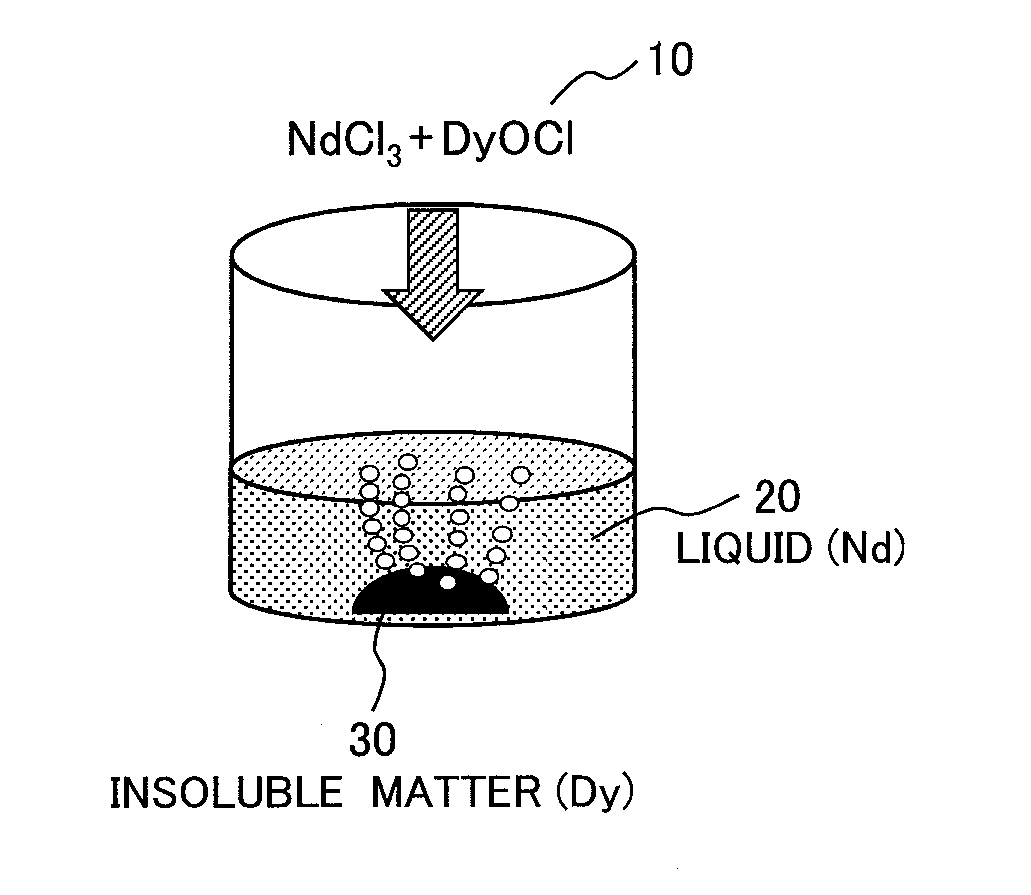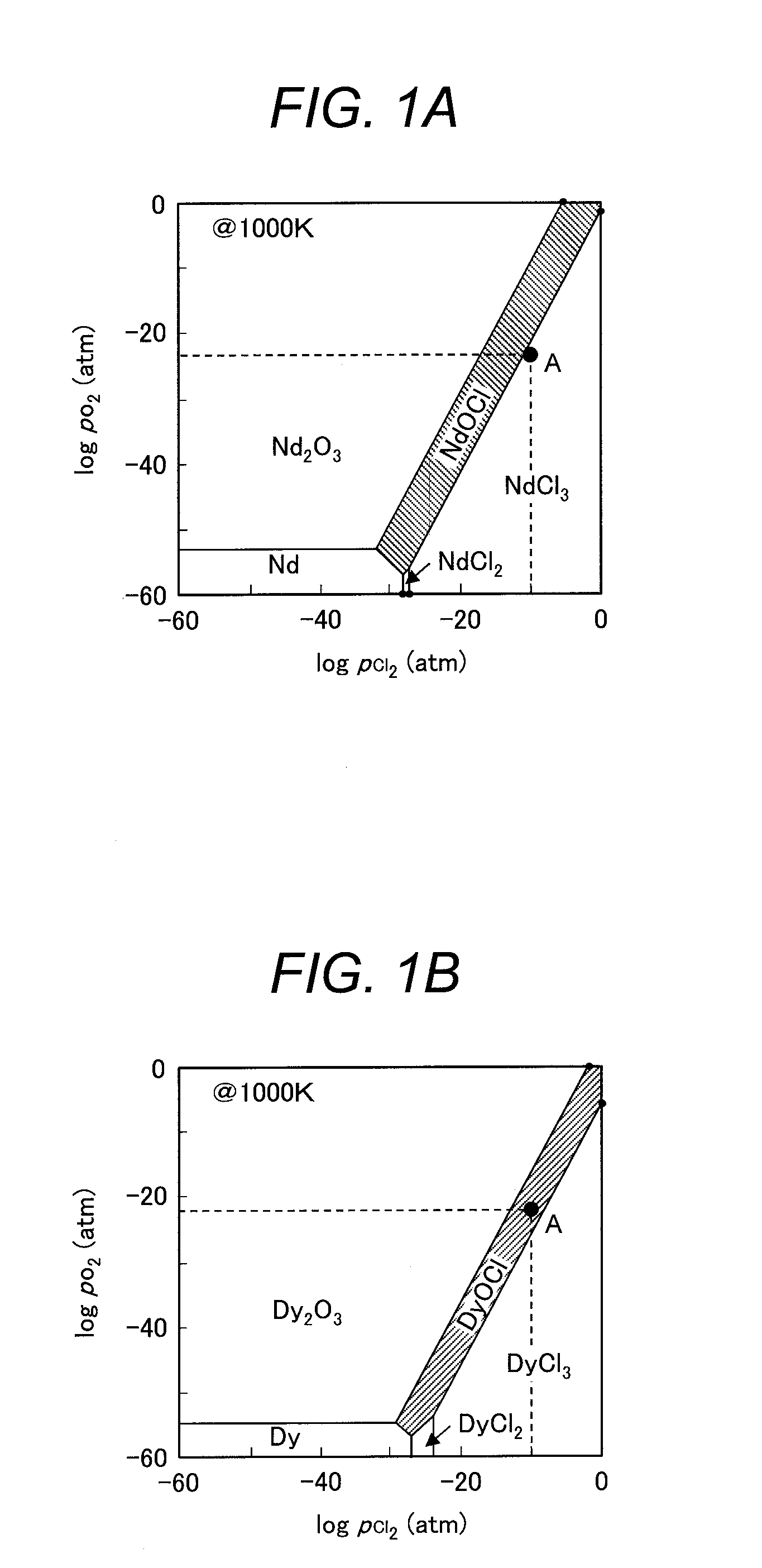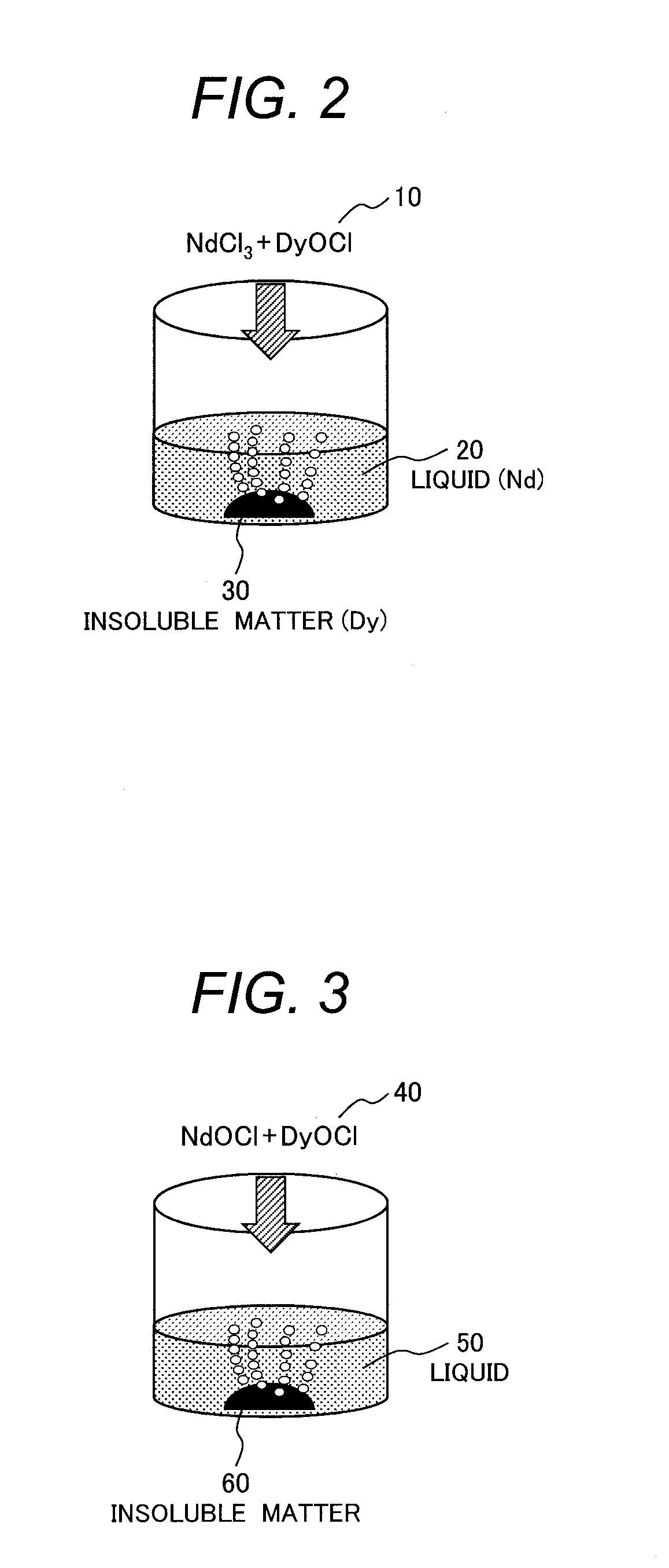Method for Separating and Recovering Rare-Earth Elements
a rare earth element and recovery method technology, applied in the field of rare earth element recovery methods, can solve the problems of increasing the cost of rare earth materials, and achieve the effects of low environmental impact, high separation rate, and low cos
- Summary
- Abstract
- Description
- Claims
- Application Information
AI Technical Summary
Benefits of technology
Problems solved by technology
Method used
Image
Examples
example 1
[0062]In this example, neodymium chloride (NdCl3) was used as a rare earth chloride and dysprosium oxychloride (DyOCl) was used as a rare-earth oxychloride. A dissolution test was performed for these samples to determine the amount of Dy contained in the liquid and a Dy separation rate of an insoluble matter (=MD / (MN+MD)×100 where MD represents mass of Dy and MN represents mass of Nd). A method of preparing the samples and a method of the dissolution test are to be described below.
[0063]A neodymium chloride powder at 3N purity manufactured by Kojundo Chemical Laboratory Co., Ltd. was used for the sample of neodymium chloride (NdCl3). The sample of dysprosium oxychloride (DyOCl) was prepared by the following method. Dysprosium oxide at 3N purity and dysprosium chloride at 3N purity manufactured by Kojundo Chemical Laboratory Co., Ltd. were weighed and mixed in a globe box under an Ar gas atmosphere at an atmospheric pressure, and hermetically confined in a reactor made of stainless s...
example 2
[0068]FIG. 6 is a graph showing a relationship between the amount of ethanol in the liquid and the Dy separation rate of an insoluble matter (=MD / (MN+MD)×100 where MD represents mass of Dy and MN represents mass of Nd) in a case where the liquid was formed by mixing ethanol with pure water. FIG. 6 shows a fitted curve of the obtained data. The amount of ethanol is represented by the ratio of ethanol in the liquid. A method of preparing the samples and a method of the dissolution test are identical with those in Example 1.
[0069]As shown in FIG. 6, the Dy separation rate tended to increase along with increase in the amount of ethanol in the liquid. In view of the above result, it can be seen that the Dy separation rate of the insoluble matter was higher as the amount of ethanol increased in the solution in which pure water and ethanol are mixed.
example 3
[0070]In this example, a dissolution test was performed with changing the mixing ratio of neodymium chloride (NdCl3) and dysprosium oxychloride (DyOCl) which were samples. A method of preparing the samples and a method of the dissolution test were identical with those in Example 1, except that the mixing ratio of the neodymium chloride and dysprosium oxychloride was different.
[0071]FIG. 7 is a diagram showing a Dy separation rate of an insoluble matter (=MD / (MN+MD)×100 where MD represents mass of Dy and MN represents mass of Nd) when the mixing ratio of neodymium chloride and dysprosium oxychloride was changed. FIG. 7 shows Dy separation rates in a case where the liquid was pure water (i.e. the amount of ethanol was 0 mass %.) and a case where the liquid was ethanol (i.e. the amount of ethanol was 100 mass %.). Further, for comparison with this example, the Dy separation rate in Example 1 was also shown for the case where the liquid was pure water and the case where the liquid was e...
PUM
 Login to View More
Login to View More Abstract
Description
Claims
Application Information
 Login to View More
Login to View More - R&D
- Intellectual Property
- Life Sciences
- Materials
- Tech Scout
- Unparalleled Data Quality
- Higher Quality Content
- 60% Fewer Hallucinations
Browse by: Latest US Patents, China's latest patents, Technical Efficacy Thesaurus, Application Domain, Technology Topic, Popular Technical Reports.
© 2025 PatSnap. All rights reserved.Legal|Privacy policy|Modern Slavery Act Transparency Statement|Sitemap|About US| Contact US: help@patsnap.com



